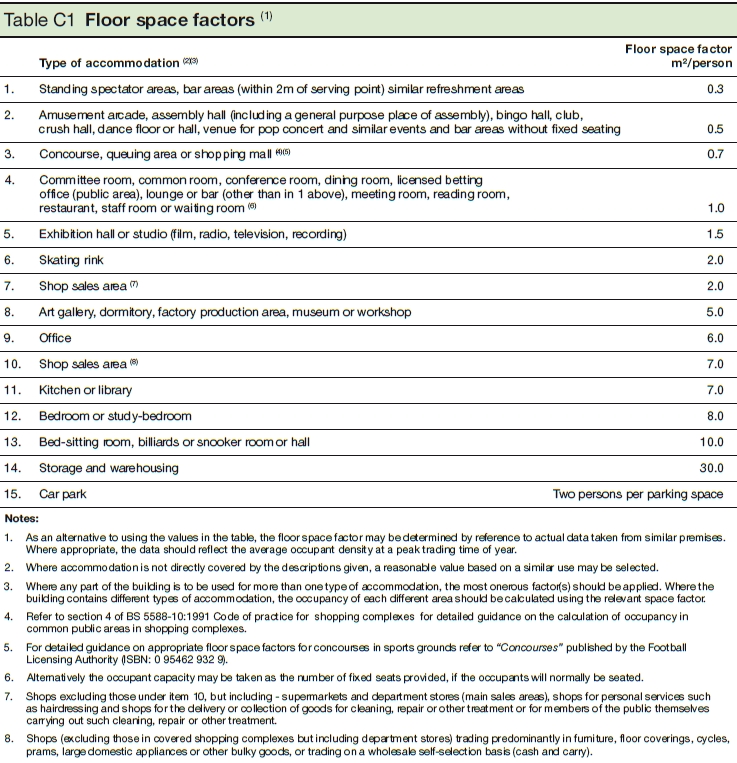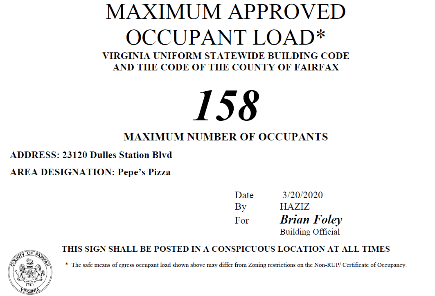Room Capacity Calculator Fire Code

You can use the following methodology to calculate the capacity of rooms in your school based upon fire safety standards.
Room capacity calculator fire code. Call center 50 ft x 25 ft 1 250 ft 2 1 250 ft2 50 ft2 per person 25 people conference room subtract cabinets. This square footage per person varies significantly depending on the type of building and can be found in section 1004 of the international fire code. 75 ft 5 ft x 50 ft 5 ft 70 ft x 45 ft 70 ft x 45 ft 3 150 ft 2 3 150 ft 2 15 ft per person 210. Calculate the occupancy count for the specific occupancy use.
Divide the square footage by 36. The occupant load factors used for each room come from table 7 3 1 2 in nfpa 101 life safety code. The use to which the room is to be put 2. Rounding down the safer bet since the fire marshal will always play it safe by allowing a smaller maximum occupancy that room should be able to hold 55 people.
Most all of the answers to the comments are in the building and fire codes. To calculate a room s maximum occupancy determine factors such as the area of the room the available space in the room the number of useful exits and the height of the ceiling. They are formulas based on each of the different types of occupancies. To estimate the occupancy of a space divide the square footage of the room by the square footage required per person.
If you measured the room in sections add up the square feet of each section. A fundamental concept of model building codes fire codes and life safety codes is that a means of egress is designed to accommodate all occupants of a building. Anon947614 april 26 2014. That is the logical and true answer.
In the example above divide 2 000 by 36 to get 55 55. Like the winecoff hotel fire the cocoanut grove nightclub fire brought about some major changes in safety standards and building codes. The total usable area of the room divided by the occupancy factor. Calculate a basic estimation of a room s maximum occupancy by dividing the available floor space in square feet by 36.
The method involves two separate calculations. The number size and location of the available exits.


















